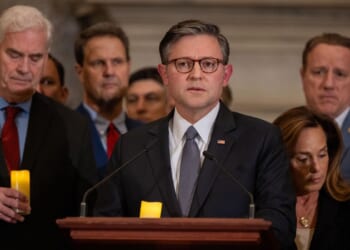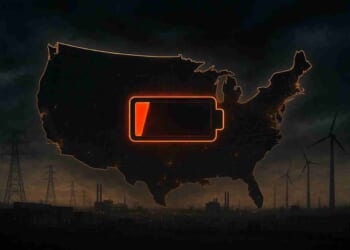
By José Niño
The headlines after Director of National Intelligence Tulsi Gabbard’s latest document release have largely focused on the two contradictory assessments of Russian interference in the 2016 election. The real intrigue, though, may reside in an obscure but jarring exchange of emails about the Steele dossier’s role in shaping U.S. intelligence.
Click the Link Below to Listen to the Audio of this Article
Buried deep within 114 pages of declassified files, these emails shed light on new uncertainties about how and why the controversial dossier so heavily influenced top-level intelligence reports.
On July 18, Gabbard released a collection of material revealing the intelligence community’s internal debates over the perceived severity and impact of Russian influence on the hotly contested 2016 presidential race. Among the revelations was an initial Presidential Daily Brief (PDB) dated Dec. 8, 2016, which questioned the Kremlin’s actual impact and concluded that Russian cyberattacks “did not impact recent U.S. election results,” implying limited motivation beyond psychological operations.
Yet, according to Gabbard, this PDB was pulled and withheld from President Barack Obama. Less than a month later, a new, far more damning assessment did reach his desk, this time alleging significant interference by Russia on behalf of the Trump campaign. Gabbard pointed to evidence that then-Director of National Intelligence James Clapper moved swiftly to reorganize the intelligence community’s assessment after the initial PDB was quashed. The sharp reversal between these two reports has sparked questions that still reverberate.
It is within the annex of these documents that an eerie email exchange surfaces, prompting both technical confusion and high-level alarm inside the intelligence bureaucracy. The chain, dating back to September 2019, came in response to a Freedom of Information Act request by Kimberly Hermann of the Southeastern Legal Foundation, a conservative non-profit.
Hermann had pressed for records about the infamous Steele dossier, which had been used as opposition research for the Clinton campaign and later became part of the FBI’s case for pursuing surveillance warrants against Donald Trump campaign associates.
The exchange begins with a redacted official from the Office of the Director of National Intelligence expressing grave reservations about how the dossier was shoehorned into the analytic process. The initial portion of the official’s Sept. 18, 2019, email focuses on the mundane: the large volume of search hits for “dossier” and questions about the practicality of reviewing them all.
The official then pivots sharply, signaling deeper worries:
Second, regarding the email below, I am choosing my words carefully, for your awareness, because the premise of the message is concerning.
Citing a background as a deputy on the “National Intelligence Officer (NIO) for Cyber” team, and as a longtime participant in foreign influence briefings, the official states unequivocally that:
I was asked by NIO Cyber [name redacted] to participate in the analytic scrub of the non-compartmented version of what I think is the 2017 ICA [Intelligence Community Assessment] referenced below. It included no dossier reference I recall.
The official emphasized that, although he/she lacked full access to compartmentalized material, a point was made to ask if something analytically significant was missing. The response, the email read, was always negative, “with the exception of compartmented material.” Personal concerns “remain unresolved to this day,” the redacted official admits.
The temperature of the exchange rises as the redacted official references hearing secondhand about then DNI Clapper’s actions:
I did hear secondhand from [redacted], ostensibly recounting words of then DNI Clapper, on the day of a briefing to current (then, I think, just elect) POTUS, about inclusion of dossier materials in a presentation to POTUS elect. This was characterized as an unexpected and unwanted sudden and unilateral act by then FBI director Comey, and as a source of concern to the DNI.
The redacted source’s next statement is startling:
To this day, I have never seen or reviewed dossier materials in a work setting. Bottom line, though, I am glad to have been spared exposure to the material, if it was influential, I hope it was in a compartment I am not in, because otherwise—given my five years of working these topics at PDB and ICA level … we may have a different information issue.
The exchange continued the next day with a brief response from a superior: “Are you asking for any guidance or action by me, or is this just informational?”
The original sender, undeterred, follows up hours later with stark clarity.
IF the dossier material WAS used by the NIC, unless it is also compartmented, my NIO intentionally deceived and excluded me from things I was cleared for and had need to know, throughout his entire tenure here. I prefer to think that isn’t true, but, if it was, we have a problem.
The superior offered a curt, bureaucratic aside:
[I]t is routine that we get material and don’t share it with everyone—and it’s not a matter of a particular clearance.
As the declassified file circulates and speculation turns to the potential for Justice Department review, buoyed by Gabbard’s criminal referral of former Obama officials, the power of the emails lies partly in what they do not say. The recipient identities remain unknown, as does the elusive context concealed by black bars of redaction.


















